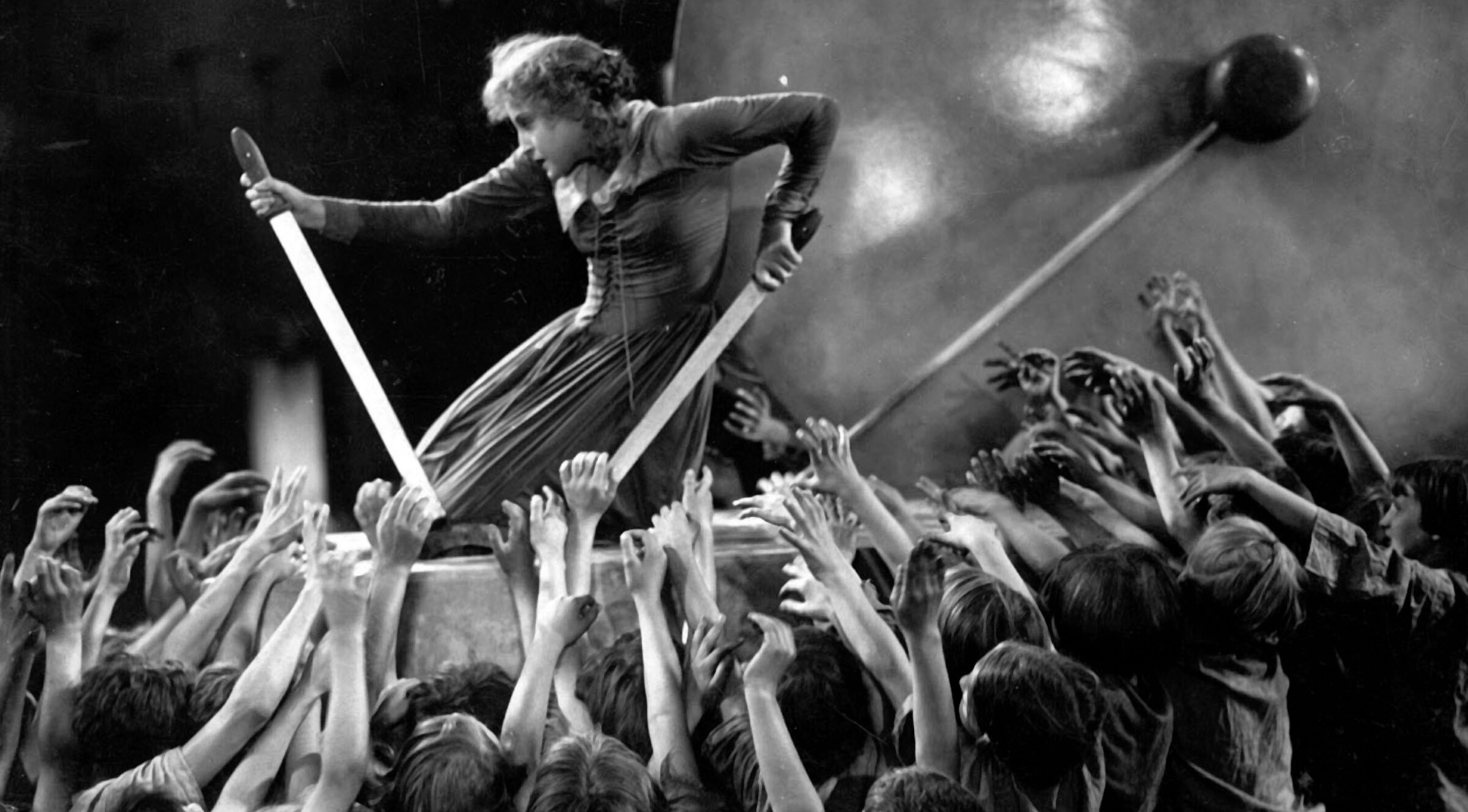This feature was published in conjunction with the screening of The Phantom of the Opera at A Day of Silents 2019
The version of The Phantom of the Opera that we see today does not share the melancholy ending of Gaston Leroux’s source novel. A villain dying of a broken heart did not satisfy preview audiences so a kinetic new finale was shot. Erik the Phantom escapes but is soon surrounded by an angry mob. He holds up his hand to threaten the crowd—what is he holding? A fiendish weapon? A bomb, perhaps? Who knows what tricks the Opera Ghost has up his sleeve! It is, in fact, nothing at all. A last flourish from a true showman before the mob tears into him.
The bomb is all too real in an earlier Lon Chaney vehicle, The Ace of Hearts, in which he sacrifices himself so Leatrice Joy can live to find happiness. All that survives of him after the explosion is a hand gripping the playing card of the title. A dramatic eleventh hour sacrifice to save the object of their affection was a relatively common way to go for silent movie villains, and while Chaney remains the master of it in classics such as The Unknown, other performers died well in the end, too. Lew Cody attempts to terrorize a movie set with a giant wind machine in Souls for Sale but has a change of heart and throws himself into the blades in place of Eleanor Boardman. In a more complicated twist, criminal mastermind played by the charismatic Manuel de los Ríos dies trying to stop his own gang from blowing up a train containing his frenemies in the Mexican thriller El Tren Fantasma.
Being killed by one’s own followers is another way for silent film villains to shuffle off the mortal coil. In Les Vampires, the killing is merciful as the colorfully named Satanas is sent a poisoned letter in prison by his aptly named successor, Venomous. Chaney, of course, feels the wrath of his former followers in both The Penalty and West of Zanzibar when his inevitable change of heart takes hold.
A great many silent film baddies live to be arrested or to atone, but a bloody fate at the hands of a vanquishing hero happens just as often. It’s no coincidence that one of the specific story devices later banned under the Production Code was revenge in a modern setting. The quest for vengeance certainly led to one of the gorier scenes in silent cinema, when Behind the Door’s Hobart Bosworth skins German U-boat commander Wallace Beery alive. A similar fate catches up to the murderer in the Mountie picture Where the North Holds Sway. The German drama Asphalt lacks the “ew” factor but not the enthusiasm with the young protagonist clubbing a gangster to death using the wrenched-off arm of a wooden chair. However, no merry silent movie murder quite matches the 1920 version of Kismet in which Otis Skinner drowns wicked royal vizier Hamilton Revelle in the palace lily pond. Skinner wrenches his enemy’s fingers from the edge, holds him underwater for a disturbingly realistic amount of time, and swings his legs gleefully as the submerged man gives up his last breath.
Fantastical deaths are also possible. The false Brigitte Helm in Metropolis is burnt at the stake by a mob, revealing her mechanical nature when she dies—or perhaps “ceases to function” is more accurate. Her creator, played by Rudolf Klein-Rogge, is subsequently thrown off the balcony of the cathedral when he attempts to make off with the genuine Helm. The shoe is on the other foot in The Chess Player when Camille Bert attempts to invade the inner sanctum of an eccentric inventor and is surrounded and slashed to death by an army of sword-wielding automatons in powdered wigs.
Leading ladies sometimes take up the mantle of villain slayer, with the 1910s being particularly co-ed in its villain elimination. Viola Dana tricks her enemy into chaining himself to the wall and then lashes him with a bullwhip in The Cossack Whip—the spoiler is in the title—but the actual murder is left to a supporting player. Dana did seventy-five percent of the work, though, and later recalled that the whip was quite heavy and cumbersome. In Judex, Musidora’s villainess ends up in a fistfight with a champion swimmer and then drowns. Mary Pickford imagines herself as Morgiana in the Ali Baba sequence of A Little Princess and makes short work of the head thief with her dagger. And, of course, the title vampire of Nosferatu is lured to his daylight-drenched end by the heroine. The question of whether or not Lillian Gish actually shot probable rapist Montagu Love in The Wind is still open, given her character’s mental state, but she certainly thought that she did.
Of course, silent film deaths could also get a laugh. In the Keystone short Barney Oldfield’s Race for a Life, Ford Sterling spends much of the time throttling anyone who stands in his way like a bewhiskered Darth Vader. When his plans are thwarted, he runs out of henchmen to strangle and must turn on himself. Wallace Beery, whose death record rivals that of Lon Chaney, dies twice in Three Ages. He falls off a cliff in the prehistoric section and, in the Roman section, he is crushed when Buster Keaton dislodges the pillars in the style of Samson. He could count himself fortunate that in the Modern Age he is merely left at the altar and likely destined for arrest. The darkest humor combines with drama in the climax of Spies. When Rudolf Klein-Rogge, clown by day and spy overlord by night, sees that his arrest is imminent, he shoots himself while performing. The audience laughs, delighted by this new trick from their favorite funnyman and reward him with a standing ovation.

